Asthma is often associated with childhood, but it can develop at any stage of life. Adult-onset asthma occurs when the condition first appears in individuals over the age of 18. Unlike childhood asthma, which is frequently linked to allergies, adult-onset asthma often has different triggers and characteristics. In this blog, we will explore the causes, symptoms, and effective management strategies for adult-onset asthma.
What is Adult-Onset Asthma?
Adult-onset asthma is a type of asthma diagnosed for the first time in adulthood. It can be more challenging to manage compared to childhood asthma due to factors like delayed diagnosis, underlying health conditions, and increased sensitivity to irritants. While it shares similarities with other forms of asthma, adult-onset asthma often requires a tailored approach to treatment and management.
Causes of Adult-Onset Asthma
The exact cause of adult-onset asthma is not fully understood, but several factors may contribute to its development:
- Respiratory Infections: Severe or recurrent respiratory infections can trigger asthma in adults.
- Allergies: While less common, exposure to allergens like pollen, dust mites, or pet dander can contribute to adult-onset asthma.
- Occupational Exposures: Long-term exposure to workplace irritants such as chemicals, fumes, or dust can lead to asthma.
- Hormonal Changes: Women may develop asthma during hormonal shifts, such as pregnancy, menopause, or starting/stopping hormonal therapies.
- Obesity: Excess weight is linked to increased inflammation, which may contribute to asthma.
- Environmental Factors: Air pollution, smoking, and exposure to secondhand smoke can irritate airways and trigger asthma.
- Stress: Chronic stress or emotional factors can exacerbate asthma symptoms.
Symptoms of Adult-Onset Asthma
The symptoms of adult-onset asthma are similar to those of other types of asthma but may appear more gradually. Common symptoms include:
- Wheezing: A whistling sound when breathing, especially during exhalation.
- Coughing: Persistent coughing that may worsen at night or after physical activity.
- Shortness of Breath: Difficulty breathing, often triggered by physical exertion or exposure to irritants.
- Chest Tightness: A feeling of pressure or discomfort in the chest.
- Frequent Respiratory Infections: Asthma can make adults more prone to colds or bronchitis.
Diagnosing Adult-Onset Asthma
Diagnosing asthma in adults can be more complex due to overlapping symptoms with other conditions such as chronic obstructive pulmonary disease (COPD) or heart disease. The diagnostic process typically involves:
- Medical History: Your healthcare provider will ask about symptoms, potential triggers, and family history of asthma or allergies.
- Lung Function Tests: Tests like spirometry and peak flow monitoring measure lung capacity and airflow.
- Allergy Testing: Identifying allergens can help determine potential triggers.
- Chest X-Ray: To rule out other conditions that may mimic asthma symptoms.
Managing Adult-Onset Asthma
While there is no cure for asthma, adult-onset asthma can be effectively managed with the right treatment plan and lifestyle changes. Here are some strategies:
1. Medications
- Quick-Relief Inhalers: Provide immediate relief during asthma attacks by relaxing airway muscles.
- Controller Medications: Daily medications such as inhaled corticosteroids or long-acting beta agonists (LABAs) help reduce inflammation and prevent symptoms.
- Biologic Therapies: For severe asthma, biologic medications targeting specific inflammatory pathways may be prescribed.
2. Avoiding Triggers
- Identify and Reduce Exposure: Minimize contact with irritants such as smoke, strong odors, or chemicals.
- Control Allergens: Use air purifiers, wash bedding frequently, and keep pets out of bedrooms if they’re a trigger.
- Improve Air Quality: Maintain a clean, well-ventilated living environment.
3. Lifestyle Adjustments
- Quit Smoking: If you smoke, quitting is one of the most effective ways to improve lung health.
- Healthy Diet: A balanced diet rich in anti-inflammatory foods can support respiratory health.
- Regular Exercise: Choose asthma-friendly activities like swimming or yoga, and consult your doctor before starting a new exercise routine.
- Stress Management: Practice relaxation techniques such as deep breathing, meditation, or mindfulness to reduce stress-induced symptoms.
4. Monitor Your Symptoms
- Asthma Action Plan: Work with your healthcare provider to create a plan that outlines steps to manage symptoms and handle emergencies.
- Track Peak Flow: Use a peak flow meter to monitor lung function and identify early signs of worsening asthma.
When to See a Doctor
Seek medical attention if:
- Your symptoms worsen or occur more frequently.
- You need to use your quick-relief inhaler more than twice a week.
- You experience severe shortness of breath or chest pain.
- Your symptoms interfere with daily activities or sleep.
Living Well with Adult-Onset Asthma
While adult-onset asthma can present unique challenges, it is possible to lead a full and active life with proper management. Stay informed about your condition, follow your treatment plan, and don’t hesitate to seek support from asthma communities or support groups like Asthma Friend.
Conclusion
Adult-onset asthma is a manageable condition with the right combination of medications, lifestyle changes, and preventive measures. Early diagnosis and consistent management are key to reducing symptoms and improving quality of life. If you suspect you have asthma or are struggling with symptoms, consult a healthcare provider for guidance and support.












